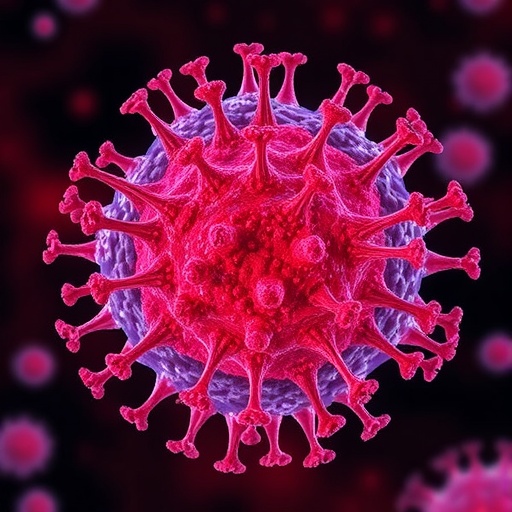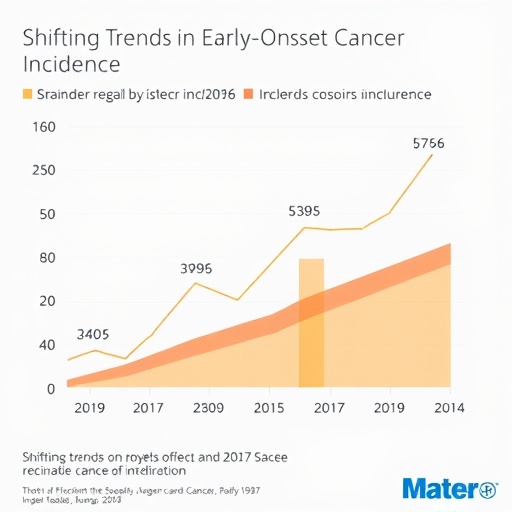In a groundbreaking study published in Nature, researchers have unveiled new insights into the architectural and functional dynamics of the nucleolus by harnessing synthetic biology tools to dissect the role of ribosomal RNA precursors in nucleolar phase organization. This work fundamentally advances our understanding of how distinct pre-rRNA transcripts independently sculpt the multiphase structure of the nucleolus, one of the cell’s most critical organelles responsible for ribosome biogenesis.
The nucleolus is known to be a multilayered condensate composed of three distinct subcompartments: the fibrillar center (FC), dense fibrillar component (DFC), and granular component (GC). These phases orchestrate ribosomal RNA synthesis, processing, and assembly into ribosomal subunits. However, the molecular drivers of nucleolar phase demarcation and their interdependence remained elusive. To address this, the researchers developed an innovative model system to express truncated pre-ribosomal RNA transcripts—specifically those constituting either the small subunit (SSU) or large subunit (LSU) precursors—allowing a precise dissection of their individual roles.
Strikingly, expression of plasmids encoding only SSU pre-rRNAs gave rise to synthetic nucleoli resembling the native DFC, evident as ring-like structures reminiscent of physiological nucleoli. These synthetic DFCs recruited key protein components such as RPA194, a Pol I subunit, and NOP56, a core SSU processome protein. However, conspicuously absent was the GC marker NPM1 and LSU-related factors SURF6 and RRP1, indicating a failure to assemble the GC phase in the absence of LSU pre-rRNAs.
.adsslot_yHVB8LMC1T{width:728px !important;height:90px !important;}
@media(max-width:1199px){ .adsslot_yHVB8LMC1T{width:468px !important;height:60px !important;}
}
@media(max-width:767px){ .adsslot_yHVB8LMC1T{width:320px !important;height:50px !important;}
}
ADVERTISEMENT
Conversely, plasmids expressing only LSU precursor transcripts (5.8S and 28S pre-rRNAs) successfully generated synthetic nucleoli that contained both DFC and GC phases. This finding confirms the indispensable role of LSU rRNA in nucleolar GC phase formation. Notably, though GC components were present, the classic ring-like morphology of the DFC was less distinctly formed without SSU pre-rRNAs, underlining the importance of SSU transcripts in shaping DFC architecture.
Analyses of RNA export further refined this model. The 18S rRNA produced from SSU-only constructs effectively trafficked to the cytoplasm and was incorporated into translating monosomes and polysomes, underscoring that the GC phase—long thought essential for ribosome processing—is not strictly required for maturation and export of SSU ribosomes. In contrast, 28S rRNA from LSU-only plasmids was not observed in the cytoplasm, even when co-expressed with SSU constructs, signifying a block in LSU ribosomal subunit assembly in the absence of SSU pre-rRNA elements and associated nucleolar environments.
Further, the study delved into the molecular underpinnings of SSU precursor processing by manipulating U3 small nucleolar RNA (snoRNA), a pivotal factor in SSU pre-rRNA maturation. Using mutated U3 variants in conjunction with SSU-only plasmids, the investigators demonstrated how disruptions to U3-mediated base pairing impaired nucleolar layering and altered the distribution of nucleolar components. For instance, mutations at the 3′ and 3′5′ hinge regions of U3 resulted in diminished dense fibrillar composition and a notable reduction in cytoplasmic 18S rRNA, linking specific RNA-RNA interactions to nucleolar phase integrity and efficient ribosome biogenesis.
High-resolution imaging of these synthetic nucleoli revealed differential recruitment patterns of proteins integral to SSU processing and ribosome assembly, including fibrillarin (FBL), EXOSC10, and ribosomal protein RPS6. These molecules showed distinct radial distributions relative to the DFC boundary, further corroborating the presence of functionally compartmentalized phases dependent on RNA-driven structural organization.
Together, these findings converge on a model in which the SSU and LSU pre-rRNA transcripts independently and coordinately dictate nucleolar phase assembly: SSU precursors shape the DFC layer, while LSU precursors drive granule formation in the GC. This modular design ensures spatial separation of ribosomal subunit maturation pathways, optimizing the efficiency and fidelity of ribosome production.
The implications of this work are profound, extending beyond fundamental cell biology into potential therapeutic avenues. Given that aberrations in nucleolar function are linked to cancer and neurodegenerative diseases, understanding the RNA-code behind nucleolar architecture could guide the development of strategies to modulate ribosome biogenesis in disease contexts. Moreover, the study’s synthetic approach sets the stage for engineered nucleoli with tailored functionalities, possibly enabling synthetic biology applications that harness ribosome assembly systems.
This work represents a paradigm shift in our comprehension of nuclear body formation and highlights the power of engineering biology to unravel the complexities of cellular microenvironments. Future investigations building on these findings will undoubtedly deepen our understanding of nucleolar dynamics, RNA processing, and their implications for cell physiology and pathology.
The study harnesses cutting-edge imaging, molecular biology, and synthetic genomic tools to reveal a previously unappreciated RNA-centric logic governing the nucleolus. This unlocks a fresh perspective on how phase-separated compartments are formed and maintained, emphasizing the vital role of RNA not just as a template but as a structural scaffold in cellular organization.
In sum, the discovery that SSU and LSU rRNA precursors independently instruct the layering of the nucleolus provides a blueprint for deconstructing complex RNA-protein bodies in cells. This insight broadens our grasp of nucleolar biology and opens new frontiers in the design of synthetic organelles and biomolecular condensates.
Subject of Research: The role of small and large ribosomal RNA precursors in shaping the multiphase architecture of the nucleolus.
Article Title: Mapping and engineering RNA-driven architecture of the multiphase nucleolus.
Article References:
Quinodoz, S.A., Jiang, L., Abu-Alfa, A.A. et al. Mapping and engineering RNA-driven architecture of the multiphase nucleolus. Nature (2025). https://doi.org/10.1038/s41586-025-09207-4
Image Credits: AI Generated
Tags: innovative research in cell biologymolecular drivers of nucleolar structureNature study on nucleolus dynamicsnucleolar phase organization mechanismsnucleolus subcompartments studypre-rRNA transcript effectsribosomal RNA precursors functionribosomal subunit assembly processesribosome biogenesis insightsRNA role in nucleolus structuresynthetic biology in nucleolar researchsynthetic nucleoli formation





